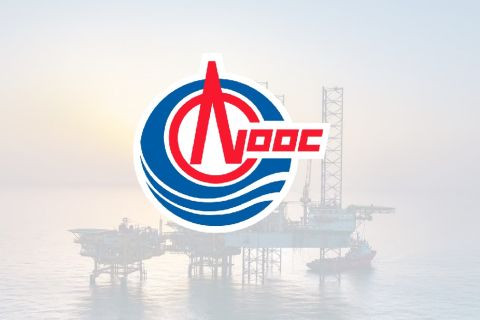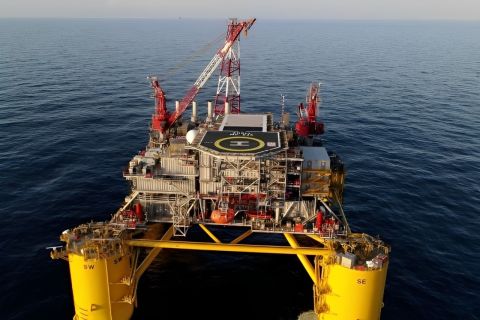
Did Canadian Prime Minister Justin Trudeau borrow a page from President Donald Trump's playbook with his social media declaration about the Energy East pipeline project? (Source: Shutterstock)
Prime Minister Justin Trudeau ripped a page from Donald Trump’s playbook and took to social media—a Facebook note, in this case—to speak directly to Canadian voters.
His message?
TransCanada Corp.’s (NYSE: TRP) decision to cancel the $15 billion Energy East pipeline project was all the fault of “market forces” and had nothing to do with his government’s regulation, despite the pipeline giant’s claims to the contrary.
 The project application to the National Energy Board (NEB) for Energy East, a 2,900-mile pipeline that would carry 1.1 million barrels per day (bbl/d) of Alberta crude oil to Eastern Canadian refineries and export markets, was withdrawn on Oct. 5.
The project application to the National Energy Board (NEB) for Energy East, a 2,900-mile pipeline that would carry 1.1 million barrels per day (bbl/d) of Alberta crude oil to Eastern Canadian refineries and export markets, was withdrawn on Oct. 5.
“…[T]here remains substantial uncertainty around the scope, timing and cost associated with the regulatory review of the Projects. There is also the question of jurisdiction that arises from the NEB’s Decision [to include downstream emissions in the review],” TransCanada wrote to the national energy regulator on Oct. 5. “After completing its careful review of these factors, the existing and likely future delays resulting from the regulatory process, the associated cost implications and the increasingly challenging issues and obstacles facing the Projects, the Applicants will not be proceeding further with the Projects…”
The cancellation was praised by pipeline opponents—First Nations, environmental groups, some local governments along the route—but greeted with dismay by business and Alberta, home of the the Canadian oil and gas industry. Historic regional resentments were reignited, with many Albertans pointing angrily to the gloating comments by Montreal Mayor Denis Coderre, who along with 50-plus area mayors had vehemently opposed Energy East.
It was the political firestorm Trudeau was addressing on Facebook when he denied his government’s efforts to “modernize” the NEB’s regulatory process was responsible for TransCanada’s decision and pointed to a deteriorating business case that included oil prices half of what they were when the project was proposed in 2014.
So, was it a bad business case or bad regulations that persuaded TransCanada to take a $1 billion loss on funds already spent rather than continue with the application?
The Donald Trump/Keystone XL Hypothesis
Noted University of Alberta economist Andrew Leach waded into the controversy with an op-ed arguing that President Trump’s March executive decision granting final approval to the 890,000 bbl/d Keystone XL pipeline from Alberta to the Texas Gulf Coast effectively killed Energy East. He noted that pipeline companies require shippers to enter into long-term, binding subscriptions called transportation service agreements and that Energy East appeared to be fully subscribed.
Keystone XL had been fully subscribed before former President Barack Obama canceled it in 2015; TransCanada convened an open season on Sept. 6, but the company came up over 200,000 bbl/d short. This put TransCanada in an awkward spot. One project was fully subscribed but faced a daunting regulatory process and fierce opposition through Quebec, a politically sensitive province for the governing Liberals. The other project did not have enough shipper support, but had received final approval in Canada and it was assumed that Trump’s support would help Keystone XL clear final regulatory hurdles in Nebraska.
The solution? Cancel Energy East and hope that shippers would migrate over to Keystone XL, whose open season had been extended by a month.
“Was TransCanada making a business decision when they canceled Energy East? Of course. It was a decision that will likely allow them to save Keystone XL,” Leach concluded.
Alternative Hypothesis: Victim Of Political Calculations
The problem with Leach’s argument is that it is entirely hypothetical, with no evidence to support it and the company’s own statements contradicting it. And industry insiders scoffed at the idea.
Former TransCanada Vice President Dennis McConaghy, who oversaw Keystone XL, said the academic doesn’t understand how the pipeline industry works. McConaghy acknowledged that approval by the Trudeau government of Kinder Morgan’s 525,000-bbl/d Trans Mountain Expansion project to the West Coast and refurbishment of Enbridge’s Line 3 (additional 390,000 bbl/d), combined with Keystone XL and Energy East far exceed needed Canadian pipeline capacity until after 2030.
“But gaining a regulatory approval has a real value,” he told Hart Energy in an email. “TransCanada and its shippers can rationalize the incremental cost of obtaining an approval for Energy East and then holding it into the next decade.”
That Energy East was fully subscribed disproves the failing business case argument. Robert Mansell, veteran energy economist and academic director of the School of Public Policy, said pipeline companies plan over a 30-to-50-year timeline.
“You can always find a point in time where the conditions are such that if you start the project that day, it wouldn’t be economic,” he told Hart Energy. “Once you’ve actually built it, you’ve got an advantage in that you only have to cover your operating cost to keep it running and wait for those periods where you actually are making a lot of money to recover your fixed investment.”
McConaghy pointed out that shippers are required to pay pipeline tolls regardless of current oil prices or their own profitability, which is why pipeline companies like TransCanada prefer large, creditworthy oil producers.
Bottom line, far from being a victim of “market forces” or a poor business case, Energy East enjoyed excellent business prospects based upon fully subscribed capacity and long-term, guaranteed revenue. What then of Leach’s argument that TransCanada sacrificed one pipeline project to save another?
“Leach dismisses that the regulatory changes by the Trudeau government made persisting with Energy East untenable,” McConaghy argued. “He should have acknowledged that. This government has real culpability here.”
There are two major changes to the regulatory process that affected Energy East.
One, the Trudeau Liberals came to power in late 2015 promising to “modernize” and fix the NEB review process for major infrastructure projects like pipelines. On May 15, the expert panel reported, its recommendations essentially giving something to both opponents (more input and public participation) and proponents (a three-year term, the first year dedicated to political and policy debate that would result in a determination if the project was “in the national interest”; a positive result would kick off a two-year technical review).
Despite some reservations, industry generally praised the report. But when the Department of Natural Resources issued its discussion paper on June 29 with its reform proposals, pipeline opponents were given everything from the expert panel recommendations and industry received almost nothing. The about-face by the Trudeau government signaled that something was seriously wrong.
Two, in September, without warning the NEB declared that downstream emissions—from refineries and automobiles in other countries, for instance—would be part of the Energy East review. This caught TransCanada by surprise; the move was unprecedented.
Mansell said it would take years just to decide if such a review was constitutional, McConaghy called the decision “idiotic” and ultimately, it was the straw that broke the camel’s back. TransCanada requested a 30-day stay on its NEB application, then announced it would cancel the project.
What could have motivated the Trudeau government to make such a radical change to its regulatory review process, especially since it had publicly stated its support for expanding Canadian oil production and getting it to market via pipelines?
In short, political calculations.
With the next national election looming in 2019 and a thin 10-seat majority in the House of Commons, Liberal strategists acknowledge the government’s pipeline support would cost it two to four seats in British Columbia and at least a few seats in Alberta, which traditionally supports conservative parties. The campaign would occur right in the middle of the looming vicious battle over Energy East and could easily endanger enough seats in Quebec to lose the election.
Then Trump threw Trudeau and the Liberals a lifeline. By reviving Keystone XL, he potentially took Energy East off the table. All Liberal strategists had to do was come up with a way to kill the pipeline without making it the government’s fault. Enter NEB modernization and regulatory reform. The timing was perfect. As an added bonus, with Energy East out of the way and no new pipeline projects on the horizon, the new draconian review process would not be tested for years, probably until long after the Liberals were no longer running the government.
Kicking the problem down the road for someone else to solve is a time-honored political strategy and, in this case, the perfect solution to the Liberals’ dilemma.
The only danger was that Canadians would catch on to what Trudeau and the Liberals were up to, which explains why the prime minister took to social media on Oct. 7 after the political uproar in Western Canada over the perceived betrayal by the East, especially Quebec.
Leach’s Oct. 9 op-ed in Canada’s largest daily newspaper bolstered Trudeau’s argument and provided cover for what the government was doing in the arcane and mostly invisible world of energy regulation. The only loser is TransCanada and its shareholders—unless, of course, fierce opposition sinks one or both of Trans Mountain Expansion and Keystone XL, in which case the Canadian oil industry loses 525,000 bbl/d to 1.4 million bbl/d during a time when oil sands production is expected to grow by 1.3 million bbl/d.
That’s the gamble being made by the Trudeau government, which the publicity-adverse Canadian industry will have to grit its teeth and bear for years to come.
Recommended Reading
US Oil, Gas Rig Count Unchanged this Week
2024-11-01 - The oil and gas rig count held at 585 to Nov. 1. Baker Hughes said that puts the total rig count down 33 rigs, or 5% below this time last year.
CNOOC Makes Ultra-deepwater Discovery in the Pearl River Mouth Basin
2024-09-11 - CNOOC drilled a natural gas well in the ultra-deepwater area of the Liwan 4-1 structure in the Pearl River Mouth Basin. The well marks the first major breakthrough in China’s ultra-deepwater carbonate exploration.
US Drillers Cut Oil, Gas Rigs for Fourth Week in a Row
2024-09-06 - The oil and gas rig count fell by one to 582 in the week to Sept. 6, the lowest since June.
Breakthroughs in the Energy Industry’s Contact Sport, Geophysics
2024-09-05 - At the 2024 IMAGE Conference, Shell’s Bill Langin showcased how industry advances in seismic technology has unlocked key areas in the Gulf of Mexico.
E&P Highlights: Oct. 28, 2024
2024-10-28 - Here’s a roundup of the latest E&P headlines, including a new field coming onstream and an oilfield service provider unveiling new technology.
Comments
Add new comment
This conversation is moderated according to Hart Energy community rules. Please read the rules before joining the discussion. If you’re experiencing any technical problems, please contact our customer care team.




